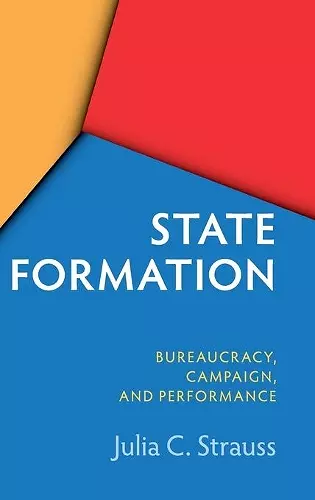State Formation in China and Taiwan
Bureaucracy, Campaign, and Performance
Format:Hardback
Publisher:Cambridge University Press
Published:7th Nov '19
Currently unavailable, and unfortunately no date known when it will be back
This hardback is available in another edition too:
- Paperback£23.99(9781108701655)

An ambitious comparative study of regime consolidation in the 'revolutionary' People's Republic of China and 'conservative' Taiwan in the early 1950s.
This is an ambitious comparative study of regime consolidation in the 'revolutionary' People's Republic of China and the 'conservative' Republic of China (Taiwan) in the years following the communist victory on mainland China in 1949. Strauss sheds new light on twentieth-century political change and state formation in East Asia.This is an ambitious comparative study of regime consolidation in the 'revolutionary' People's Republic of China and the 'conservative' Republic of China (Taiwan) in the years following the communist victory against the nationalists on the Chinese mainland in 1949. Julia C. Strauss argues that accounting for these two variants of the Chinese state solely in terms of their divergent ideology and institutions fails to recognise their similarities and their relative successes. Both, after all, emerged from a common background of Leninist party organization amid civil war and foreign invasion. However, by the mid-1950s they were on clearly different trajectories of state-building and development. Focusing on Sunan and Taiwan, Strauss considers state personnel, the use of terror and land reform to explore the evolution of these revolutionary and conservative regimes between 1949 and 1954. In so doing, she sheds important new light on twentieth-century political change in East Asia, deepening our understanding of state formation.
'A meticulously researched and elegantly presented study of state consolidation in mainland China and Taiwan. By shrinking the mainland geographic focus to Sunan, where the social roots of the communists were relatively weak, Strauss exploits rich archival data and builds analytical leverage to illuminate commonalities and differences in strategies of the two states as outsiders after 1949.' Melanie Manion, Duke University, North Carolina
'Historians have long recognized that for all their mutual hostility and apparent ideological opposition, the two regimes on either side of the Taiwan Strait after 1949 actually had much in common. In this provocative and impressively researched work, Julia C. Strauss treats this parallelism as a kind of natural experiment in state consolidation, which she analyzes to produce more general insight into how new states pursue their agendas.' Michael Szonyi, Harvard University, Massachusetts
'Strauss (Univ. of London) has authored a fascinating comparison of two variants of the Chinese party-state in the mid-20th century.' S. C. Hart, Choice
'Overall, an excellent book, well worth the attention that it will receive from both historians of modern China and political scientists interested in state formation.' Carl Minzner, Journal of Chinese Political Science
ISBN: 9781108476867
Dimensions: 235mm x 156mm x 18mm
Weight: 590g
292 pages